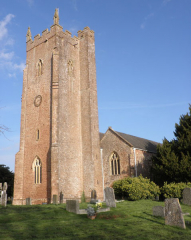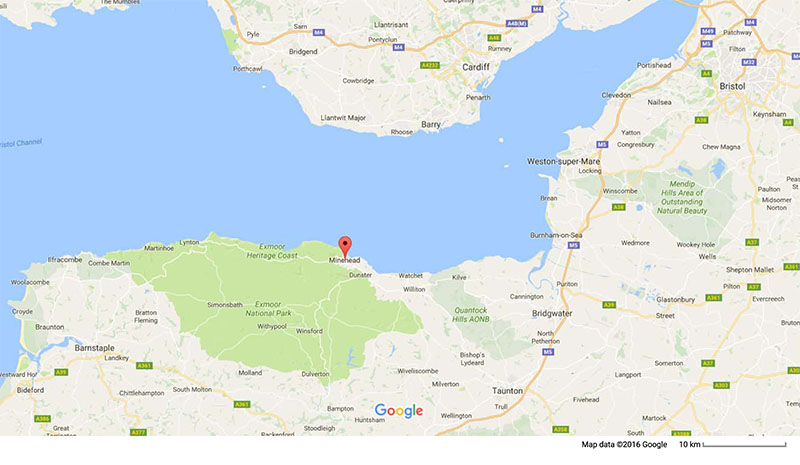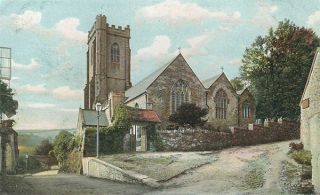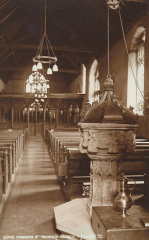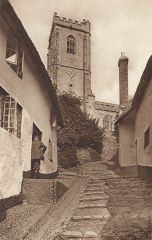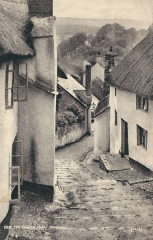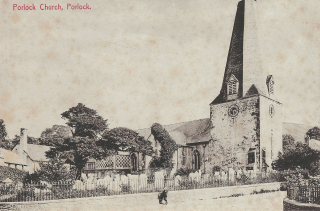People start researching their family history for a number of reasons including wanting to discover their roots (where their family originated from) or to find out about a particular member of their family.
Vince Martin had always wanted to know about his grandfather, Sidney Herbert Martin, about whom his father had been able to tell him almost nothing.
Vince’s father was born in 1914 and was just six when Sidney Herbert died in 1920 and for some of those years Sidney had been away at war so his young son had no chance to get to know him. And after Sidney’s death, there was very little mention of Sidney within the family. Although Vince has his grandfather’s war medals, there are no photographs of Sidney anywhere.
In seeking to find out about Sidney Herbert, we first look at his whole family and his place within it, following the trail of births, marriages and deaths back through the ages.
And immediately find ourselves with the family historian’s nightmare of successive generations being given the same first and even second names.
It requires concentration and double or triple checking to make sure we’re on track with the right generation or right branch but occasionally our ancestors made it a little easier by incorporating a second or third name, such as the mother’s maiden name.
And so it was that when the boy was born in 1914 and named after his father, he received Langford, his mother’s surname, as a third name. Thus we have Sidney Herbert Langford Martin born in 1914 and Sidney Herbert Martin born in 1881.
A generation before, a boy had been born in 1843 and named George Martin after his father, who was born in 1820, but the younger George was given the second name of Cowley, his mother’s maiden name. So far so good but there our luck runs out.
George Martin’s father and grandfather were both named Peter. One was baptised in 1742, the other in 1779 and so we resort to calling one senior and one junior.
Peter Martin senior’s parents were Thomas Martine and Joane Whitefield who were married on the 29th September 1725 in St Michael’s church, Milverton, Somerset.
The name Whitefield (including spellings such as Whitfill or Whitefull) appears as a first name across at least four generations of their descendants.
Milverton is near Taunton and by today’s roads, Gloucester is some 90 miles away, so who were Thomas and Joan and when and why did their descendants arrive in Gloucester?
Joan Whitefield
The parish register shows East Combe as the bride’s abode. It was a hamlet, now in the village of Combe Florey, about seven miles from the village of Milverton. East Combe had its own church so it is a puzzle as to why the couple chose to get married in Milverton.
It was traditional for marriages to take place in the bride’s home parish but there were no other entries for Whitefields in the Milverton parish registers around that time so it is unlikely that her family were from Milverton. However, there was (and still is) a large manor house in the village and it is possible that she was employed there. However, in those days, she wouldn’t have commuted every day, and she would probably have been a live-in servant, so her abode would have been in Milverton, not East Combe.
Searching the parish registers for 50 years before and after 1725 we find 110 Whitefield (including some variations in spelling) entries for baptisms, marriages and burials in Somerset, of which 37 were within 7 miles of Milverton; 27 at Wiveliscombe and another 10 at few other parishes.
The transcriptions of the parish registers which are currently available online show only one baptism for a Joane Whitefield/Whitfill in Somerset, in 1686, in Wiveliscombe. That would make her 39 if she married in 1725, not an unreasonable age for a woman to marry (especially if she was a widow at the time) but in this case, it’s not likely as ‘our’ Joan went on to have nine children before dying in 1757.
However, a Joan Whitefield, daughter of Will and Rebecca Whitefield, was baptised in Bampton, Devon on 12 February 1703. Could this have been ‘our’ Joan?
She would have been 22 in 1725. Bampton is 15 miles from Milverton and 17 miles from East Combe, a feasible distance for somebody to have travelled to become a farm or manor house servant.
Having found a baptism it is always good practice to make sure that the infant survived into adulthood before considering the child as the person we’re looking for.
In this case, there were two burials of a Joan Whitfield in Bampton, in 1719 and in 1722 but no ages were given, which indicates that they were adults. However, either could have been the person who was baptised in 1703 or they could have been wider members of the family.
Will Whitefield and Rebecca North were married in Bampton on 28 June 1697. Unfortunately the marriage registers of that time gave nothing more than the place, date and names of the bride and groom. However, it is clear from the Bampton parish registers that there were a large number of Whitefields who were baptised, married or buried there in the late 1600s, early 1700s. And today there is a farm named Whitefields just a couple of miles away at Knowstone.
Can we claim Joan Whitefield, baptised in Bampton in 1703 as ‘our’ Joan?
Well, when we get so far back we are really into the realms of conjecture but, unfortunately, even if it is circumstantial evidence I require something a little more substantial before I can propose such a hypothesis. And so no, whilst Joan Whitefield, baptised in 1703 may well have been Vince’s 5 x great grandmother, there is no evidence, circumstantial or otherwise, and so I think it is time to leave our search for Joan Whitefield’s origins and turn our attention to her husband Thomas Martin and to their descendants.
Thomas Martin
The parish register for St Michael’s church, Milverton gives Thomas’ abode as Minehead and it is in Minehead that the couple set up home, about 45 miles from Milverton.
There is no indication of Thomas’ occupation but Minehead is on the coast and so it is quite likely that Thomas and some of his children were sailors or connected with the sea in some way.
Married in 1725, it is likely that Thomas was born between 1680 and 1705 but I can find no suitable baptism record for him, in Minehead or elsewhere, though it is clear that there was a Martin family in Minehead for over 150 years before Thomas and Joan married and set up home there.
When he was buried, Thomas’ surname name was recorded as ‘Vicary alias Martin’, which means that he was ‘also or otherwise known as’. Unlike today, the use of an alias was not to conceal a person’s identity but, during the time when surnames were being established, to further identify them, perhaps by including a mother or grandparent’s name.
The parish registers show that there was a large Vicary family in Minehead between 1617 and 1725 but, unfortunately, no baptism for a Thomas in the right period.
And so we have to admit defeat on finding anything about Thomas’ ancestors and start looking at his children with Joan. They had ten children between 1725 and 1742, the youngest of whom was Peter, born in 1742, whose line we will be following.
Thomas and Joan remained in Minehead until their deaths, Thomas in 1752 and Joan in 1757.
Variations on spelling the surname Martin
One of the problems which beset family historians is that, prior to the early 1800s, there was little or no standard spelling of surnames. People, normally vicars, would use the spelling to which they were accustomed or would write what they thought they heard, which could be even more problematic if the vicar wasn’t from the local area and mis-heard the accent.
The Martin family was no different in this respect to many others but the variations in spelling are a little easier to understand and find than many.
At his wedding, Thomas’ surname was spelt Martine and between 1726 and 1742, the baptism register of St Michael’s church, Minehead, recorded nine of his ten children’s surnames as Martine, Martyn, Martin and Martins. I can’t find a baptism for Whitefield Martin but that he was the son of Thomas and Joan is apparent by references in the baptism registers for his children.
The baptismal font in the church now is the same one which would have been used to baptise all the members of the Martin family over several generations.
By 1768, Thomas and Joan’s grandchildren were baptised with the surname Martain but their grandson Peter was noted as Peter Martin when he married Ann Reed in 1800. Thereafter, the name remained Martin.
St Michael’s church, Minehead, played a very large part in the lives of the early Martin family members as generations were baptised, married or buried there.
As I’ve combed through the parish register transcriptions, recording each event, I’ve wondered at the stamina of the people climbing the steps to the church, happy at the proposed baptism or wedding or sad at the loss of a family member, perhaps a child.
There is a road which leads to the church and I hope that those charged with carrying the coffins for the funeral service would have been able to go that way, rather than up the steep stairs. I hope that the coffins were taken by horse and cart.
Built on the side of such a steep hill, a beacon was often lit at the top of the tower, to guide ships into harbour.
Peter Martin and Peter Martain
The youngest of the ten children of Thomas and Joan, Peter Martin was baptised in 1742, in St Michael’s church Minehead, as were all his siblings. And, like them, he also married there, in 1765.
His wife, Joanna Cragg had been baptised in the same church, also in 1742. She was the daughter of John Cragg. It seems likely that her parents were John Cragg and Joan Milton who married in 1732 in St Michael’s church, Minehead. This is the first mention of the surname Cragg in the parish registers. Perhaps the Cragg family moved to Minehead at one of the boom times for the town, when shipping and trade was on the increase. They had nine children between 1733 and 1745, with the surname twice being recorded in the baptismal register as Craig.
We know little about Peter and Joanna other than they had three children: Whitfield baptised in 1770, Thomas who died in 1778 and Peter, baptised in 1779. The baptisms and the death of Thomas were recorded with the surname Martain.
Peter died in 1799 and Joanna in 1810. Both were buried in Minehead.
Their son, Peter Martain married Ann Reed in 1800. She was also a local girl, the daughter of George Reed and Mary Blackmore, baptised in St Michael’s church, Minehead, in 1779.
Peter and Ann had thirteen children between 1801 and 1822. By 1815, the baptismal registers had started recording the occupation of the father. In 1815, 1818, 1820 and 1822 he was noted as a mariner but in 1816 he was noted as a mariner and a customs house officer.
When their son Whitefield married in 1840, he gave his father as Peter Martin, a tide waiter. A ‘tide waiter’ was a customs inspector who, quite literally, waited for the tide and boarded ships when they docked, to enforce customs regulations.
Peter and Ann’s children
We know nothing of Thomas, baptised in 1801, Peter in 1804 and Richard in 1808 as there are neither burial nor marriage entries for them. Ann was baptised in 1802 and died in 1818, and her sister Charlotte was baptised in 1812 and died in 1826.
John, baptised in 1806 became a mariner. He married Sarah Stacey in 1829 and remained in Minehead. They had eleven children with several of the sons becoming seamen. Their son Whitfield moved to Milford Haven, a port in south west Wales, where he married a local girl and had six children.
John jnr became an able seaman and a coast guard, marrying and moving to Milford Haven and then other places on the Welsh Pembrokeshire coast. Richard became a seaman, fisherman and master mariner, marrying in Minehead and raising a family there. William also became a seaman, marrying and raising a family in Porlock. Thomas choose not to go to sea but became a mason, a stoneworker.
Peter and Ann’s son Joseph, baptised in 1810, married Hannah Morse in 1834 along the coast from Minehead, in Watchet. He became a mariner there but by 1861 the family had moved to Cardiff, where he became a porter.
Whitfield, who was baptised in 1812, married Mary Winter in 1840 in Minehead. In 1841, Whitfield, then a baker, was living in the hamlet of Wootton St Mary (now part of Gloucester) with his wife Mary. By 1851 he was a master baker in Chepstow and by 1861 he had moved back to Somerset and was a baker in Watchet.
Betsey, also known as Elizabeth, was baptised in 1818 and remained single. It’s not known where she was for the 1841 to 1861 censuses but 1871 and 1881 she was an assistant lodging house keeper in Paddington, London. By 1891 she was assisting her niece, Eliza Edwards, who was an innkeeper in the parish of Hanley Castle, Upton on Severn, Worcestershire. Betsey died in Cheltenham aged 84, a retired lodging house keeper.
Of Peter and Ann’s thirteen children, there remained Catherine, baptised in 1815, Mary, in 1816, George in 1820 and Henry in 1822.
Next: From Minehead to Gloucester and a position of trust
Sources:
http://freereg2.freereg.org.uk
